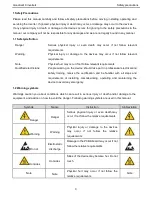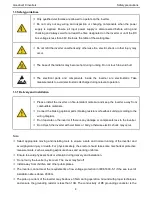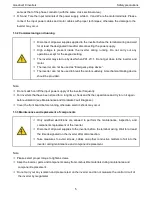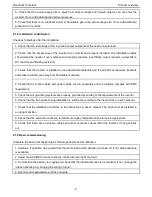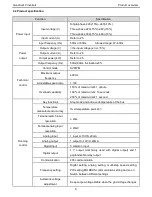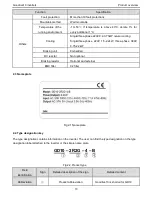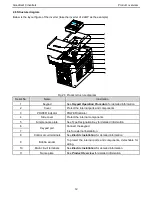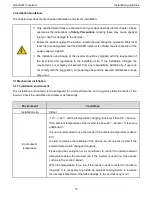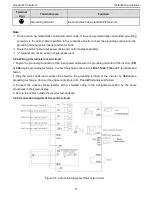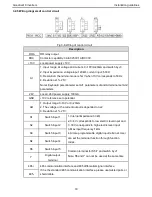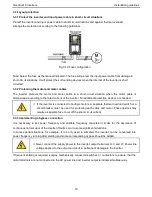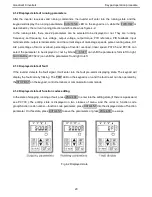
Goodrive10 inverters Product overview
8
5. Check that the actual usage site is away from direct sunlight and foreign objects can not enter the
inverter. If not, add additional protective measures.
6. Check that there is no conductive dust or flammable gas in the actual usage site. If not, add additional
protection to inverters.
2.1.4 Installation confirmation
Check as followings after the installation:
1. Check that the load range of the input and output cables meet the need of actual load.
2. Check that the accessories of the inverter are correctly and properly installed. The installation cables
should meet the needs of every component (including reactors, input filters, output reactors, output filters,
DC reactors and braking resistors).
3. Check that the inverter is installed on non-flammable materials and the calorific accessories (reactors
and brake resistors) are away from flammable materials.
4. Check that all control cables and power cables are run separately and the routation complies with EMC
requirement.
5. Check that all grounding systems are properly grounded according to the requirements of the inverter.
6. Check that the free space during installation is sufficient according to the instruc
tions in user’s manual.
7. Check that the installation conforms to
the instructions in user’s manual. The drive must be installed in
an upright position.
8. Check that the external connection terminals are tightly fastened and the torque is appropriate.
9. Check that there are no screws, cables and other conductive items left in the inverter. If not, get them
out.
2.1.5 Basic commissioning
Complete the basic commissioning as followings before actual utilization:
1. Autotune. If possible, de-coupled from the motor load to start dynamic autotune. Or if not, static autotune
is available.
2. Adjust the ACC/DEC time according to the actual running of the load.
3. Commission the device via jogging and check that the rotation direction is as required. If not, change the
rotation direction by changing the wiring of motor.
4. Set all control parameters and then operate.




